Chinese infantry anti-tank weapons during the Cold War
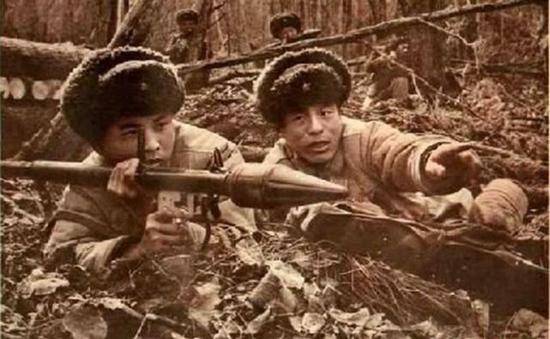
During the fighting on the Korean Peninsula, Chinese people's volunteers quite often came across American and British-made armored vehicles. Based on the experience of using existing anti-tank weapons, the PLA command came to the conclusion that it was necessary to further improve manual anti-tank grenades and rocket-propelled grenade launchers.
Hand anti-tank grenades
The RPG-43 and RPG-6 hand-held cumulative grenades delivered from the USSR performed well in Korea, but it was obvious that with increased protection of medium and heavy tanks existing anti-tank grenades in the near future will no longer be able to penetrate their armor. In the 1950s, the Chinese military-industrial complex was not yet able to independently develop modern weapon, and once again help to strengthen the defense of China provided the northern neighbor.
In 1950, the RGK-3 hand-held cumulative grenade was adopted for service in the USSR. The principle of its operation was similar to the RPG-43 and RPG-6, but the new infantry anti-tank ammunition had increased armor penetration and, thanks to several degrees of protection, greater security of use. In the mid-1950s, a license was issued to the PRC for manufacturing the RKG-3E grenade, which, when approaching the target at an angle of 30 ° from the normal, could penetrate 170 mm homogeneous armor. In China, pomegranate, modified under local production conditions, received the designation Type 3.
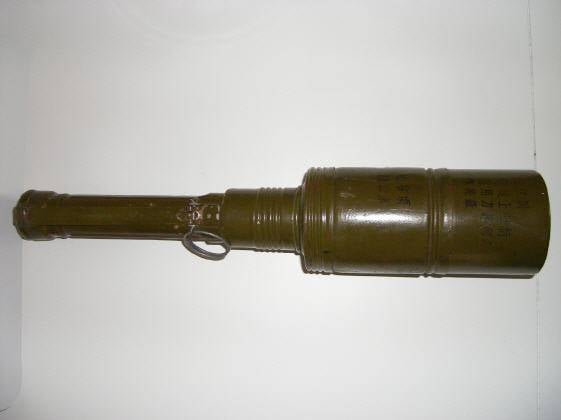
The total length of Type 3 grenades was 352 mm, diameter - 70 mm, weight - 1100 g. The warhead weighing 435 g was equipped with TNT. A well-trained fighter could throw a grenade at 15-20 m. Throwing a grenade is made from any position, but only because of the shelter.
In the 1950-1970s, the Type 3 grenade could be successfully used against medium and heavy tanks of the first post-war generation. However, after the appearance of the T-64 and T-72 tanks with multi-layer frontal armor in the USSR, the PLA command in 1977 demanded the creation of an individual anti-tank weapon with which it would be possible to fight these vehicles.

In 1980, tests began on a new grenade, adopted the same year under the designation Type 80. The grenade with a light alloy body in the curb position weighed 1000 g, had a length of 330 mm, a diameter of 75 mm. The warhead equipped with an alloy of TNT and RDX, according to information published in Chinese sources, normally pierced 250 mm homogeneous armor. During the tests, it was found that physically strong soldiers could throw a Type 80 grenade at 30 m. As with other hand-held cumulative grenades, the relatively safe use of Type 80 was possible only from shelter. The Type 80 Hand Cumulative Grenade has become the most advanced ammunition of its kind. But by the beginning of the 1980s, an anti-tank grenade, thrown by hand, was already an anachronism, and the Soviet and American infantry were armed with disposable grenade launchers.
At present, Type 3 and Type 80 hand-held anti-tank grenades are not used by the PLA, and in the PRC they can only be in warehouses. At the same time, a significant number of Chinese-made cumulative grenades were delivered to Iran in the past, which was transferred to the Iraqi Shiite militia. Cumulative grenades during attacks on the US occupation forces in Iraq under urban conditions proved to be quite effective anti-tank weapons.
Hand anti-tank grenade launchers
After comprehending the experience of military operations in Korea, it became clear that the anti-tank weapons of the Chinese infantry did not meet modern requirements. The Chinese clones of the “superbase” and recoilless 57- and 75-mm guns had considerable dimensions and mass, which made it difficult to move and disguise them on the battlefield. The anti-tank 90 mm Type 51 grenade launcher did not reach the level of the American prototype 88,9 mm M20 in terms of its characteristics. The same was true for recoilless guns - in terms of effective firing range and armor penetration, the Chinese samples were noticeably inferior to the American recoilless M18 and M20. Under the new conditions, a weapon was required that could be freely carried and used by one soldier, and, unlike hand-held anti-tank grenades, it was safe to use at a greater distance and outside the shelter.
In 1949, the USSR began mass production of the RPG-2 hand-held anti-tank grenade launcher. This weapon had a fairly simple design and had very high characteristics for that time. When creating the RPG-2, technical solutions were laid that later became basic in the creation of more advanced grenade launchers.

The grenade launcher in combat position weighed 4,67 kg and had a length of 1200 mm. The direct shot range was 100 m, the aiming range was 150 m. Aiming is carried out using an open sight. For firing at armored vehicles, an 80-mm PG-2 over-caliber grenade weighing 1,85 kg was used. After the operation of the bottom fuse, a cumulative warhead (220 g) is capable of piercing 200 mm armor normal. A cardboard sleeve equipped with black gunpowder was attached to a PG-2 grenade using a threaded connection before a shot. The grenade was stabilized in flight by six flexible steel feathers rolled around a tube and deployed after departure from the barrel. The barrel of the grenade launcher with an internal diameter of 40 mm outside the rear is covered by a wooden casing that protects the arrow from burns. The staff calculation of a grenade launcher is 2 people, a shooter and an ammunition carrier. The shooter carries a grenade launcher and three grenades in a special satchel, a tray armed with a machine gun carries three more grenades.
In 1956, the PLA adopted a Chinese copy of the RPG-2, which received the designation Type 56, the cumulative grenade PG-2, known as Type 50. China may have surpassed the Soviet Union in the number of issued copies.
[/ Center]
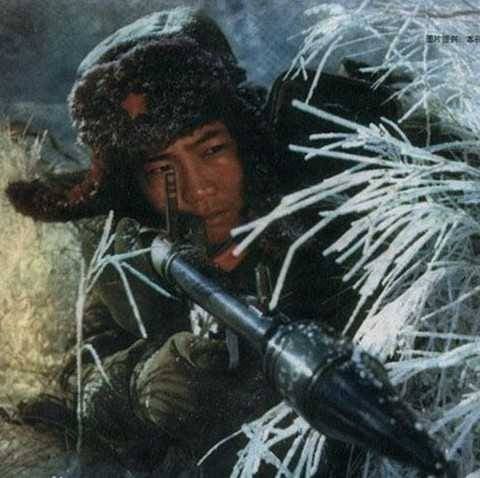
According to Chinese sources, by the end of the 1960s, at least one anti-tank grenade launcher was in every PLA infantry platoon. However, do not forget that, in addition to Type 56, the Chinese army exploited a significant amount of 90 mm Type 51 grenade launchers.
The production of Type 56 grenade launchers in the PRC continued until 1970. Late-release weapons differed from the Soviet prototype in plastic pads. Since in the late 1960s and early 1970s, the protection of Western and Soviet tanks increased markedly, the PRC developed and adopted its own cumulative grenade capable of penetrating 300 mm thick armor. Since anti-tank grenade launchers were very often used against manpower and field fortifications during local conflicts, a grenade with a fragmentation shirt was created in China. Chinese Type 56 grenade launchers, along with the Soviet RPG-2s, were very widely used during regional conflicts and were in service with the PLA until the mid-1980s. They are still exploited by the armies of some Asian and African countries.
The widespread and long service life of RPG-2 grenade launchers and the Chinese counterpart Type 56 became possible due to the high reliability due to the simple design and low cost of production. At the same time, the grenade launcher was not without flaws. The use of black powder in the propellant charge, which had a low energy potential, when fired, led to the formation of a cloud of thick white smoke, unmasking the grenade launcher. In conditions of high humidity, the cardboard sleeve swelled, which made loading difficult, and the powder itself, damp, became unsuitable for shooting. Due to the low initial velocity of the cumulative grenade (85 m / s), it was subject to drift by the wind along the trajectory. Only a well-trained grenade launcher could get into the tank with a side wind of 8-10 m / s at a distance of 100 meters.
In 1961, an RPG-7 grenade launcher entered service with the Soviet Army. When it was created, the experience of the combat use of domestic and foreign anti-tank grenade launchers was taken into account.
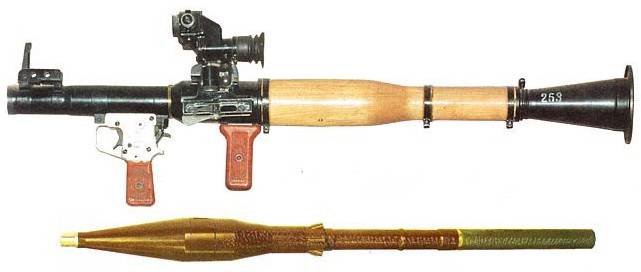
For the first time in our country, a piezoelectric fuse was used in the PG-7V cumulative rocket launcher for weapons of this kind. The grenade was stabilized in flight by four expanding blades. In order to increase the accuracy of firing and compensate for errors in the manufacture of grenades due to the tilt of the stabilizer blades, rotation is transmitted at a speed of several tens of revolutions per second.
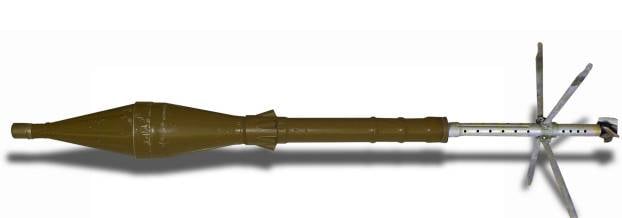
The design of the grenade launcher and the shot were based on the reusable launcher of the reusable launcher and the shot with the anti-caliber warhead, which proved themselves in RPG-2. In the middle part of the RPG-7 barrel there is a special charging chamber, which allows more rational use of propellant charge energy. To disperse a jet stream during firing, a bell in the breech of the barrel is intended. The RPG-7 hand grenade launcher, in addition to the mechanical sight, was equipped with a 2,7-fold PGO-7 optical sight. In the optical sight there was a rangefinder scale and side corrections scale, which increases the accuracy of shooting and allows you to effectively enter corrections taking into account the range and speed of the target. After adopting new, more effective cumulative grenades, grenades began to mount sights in which ballistics of different types of grenades were taken into account.
Above-caliber 85-mm anti-tank grenade PG-7V with a shot mass of 2,2 kg could penetrate 260-mm armor. The initial speed of the grenade is about 120 m / s, at the end of the active section it increases to 300 m / s. Due to the relatively high initial speed and the presence of the active site of the jet engine, in comparison with the PG-2, it was possible to significantly increase the accuracy and firing range. With a direct-shot range of 330 m, the aiming range is about 600 m. As the defenses of the potential enemy’s tanks increased, more effective grenade-throwing shots were adopted. Depending on the modification and purpose, the RPG-7 ammunition has a caliber of 40-105 mm with armor penetration of up to 700 mm for dynamic protection, and a mass of 2 to 4,5 kg.
Since relations between the USSR and China began to deteriorate at the time of adoption of the RPG-7, the license to manufacture a new grenade launcher was not transferred to China. In the late 1960s, Egypt, licensed to manufacture, sold China technical documentation for RPG-7, as well as a significant number of grenade launchers and shots to them. After that, China created its own analogue of RPG-7, known as Type 69. By its characteristics, the Chinese grenade launcher is generally similar to the Soviet prototype, but differed in some details. The first Type 69 modification was equipped with bipods, mechanical sights and had one handle.
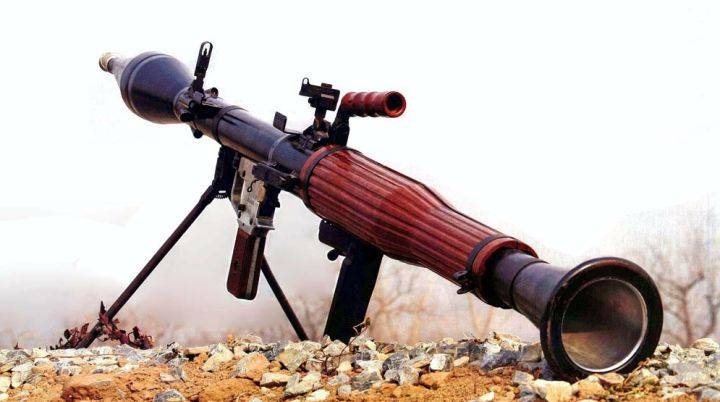
The first Type 69 grenade launchers entered the army in 1970. Before the troops were saturated with new anti-tank weapons, most Type 69 grenade launchers were sent to units deployed along the border with the USSR. The relevance of this approach was confirmed during the border conflict in the area of Damansky Island. Despite the loud statements about military successes, in practice, the main Chinese infantry anti-tank weapons (recoilless 75 mm Type 56 guns and Type 56 rocket-propelled grenade launchers) proved to be ineffective in the fight against Soviet T-62 tanks. At present, the PRC has recognized that in the late 1960s and early 1970s, the Chinese infantry could not counter Soviet tank wedges, get to the point of a big war. Multiple launch rocket systems, air superiority and tactical nuclear weapons were able to discount the superiority of the Chinese army in manpower.
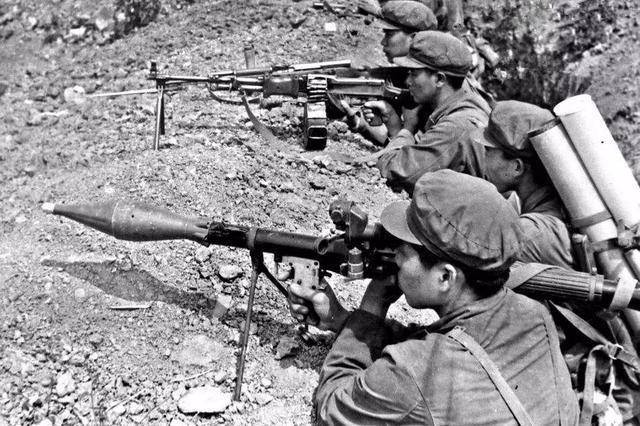
Type 69 grenade launchers were launched at a factory in Xiangtan City, Hunan Province. According to information published on Chinese Internet resources, the PLA command in the 1970s attached great importance to the rearmament of the army with new grenade launchers. However, due to the large number of Type 56 hand-held anti-tank grenade launchers fired, they continued to be used in parallel with Type 69.
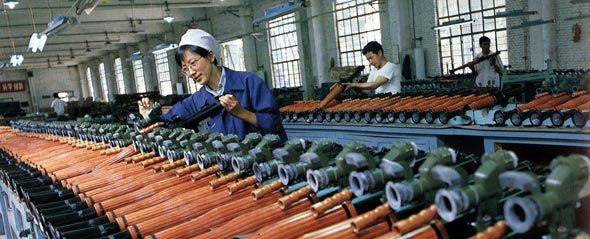
In the second half of the 1970s, the Chinese infantry received a new modification of the Type 69-I grenade launcher with an optical sight and a cumulative grenade, capable of penetrating 180 mm armor when hit at an angle of 65 °.
In the 1980s, grenade launchers appeared in the troops, equipped with night sights and rocket-propelled grenades with an increased firing range. In 1988, along with the creation of new cumulative grenades with increased armor penetration, a fragmentation round was introduced into the ammunition with a firing range of up to 1500 m. According to Chinese data, a high-explosive fragmentation warhead provides a continuous destruction zone within a radius of 5 m.
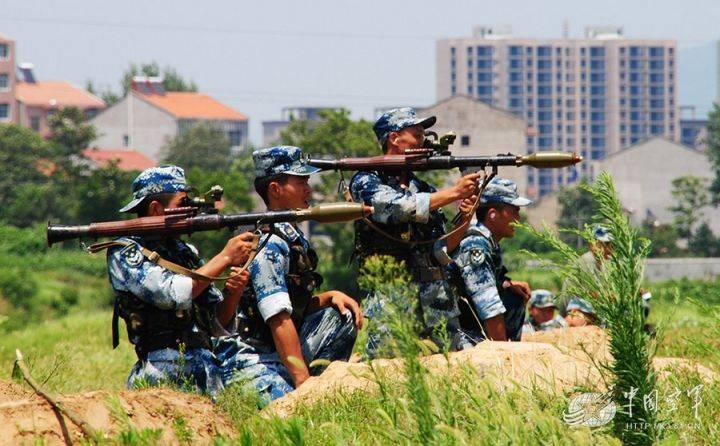
Type 69 grenade launchers were first used in combat in February 1979 during the Sino-Vietnamese war and are still widely used by the PLA, but parts of the "first line" in the 21st century are gradually moving to more modern models of infantry anti-tank weapons.
In the second half of the 1960s, several disposable 66-mm M72 LAW grenade launchers (Light Anti-Tank Weapon - light anti-tank weapons) were delivered to China from Vietnam. This weapon, which is an individual freelance anti-tank weapon of the American infantry, officially entered service in March 1961, and subsequently became a role model when creating disposable grenade launchers in other countries. Thanks to the use of fiberglass and inexpensive aluminum alloys, the M72 LAW was lightweight and relatively cheap. To launch the feathered cumulative grenade, a telescopic smooth barrel is used - an internal aluminum and an external fiberglass. On the body of the grenade launcher are a starting device and an open mechanical sight. The starting device, which also acts as a sealed transport container, is closed on both sides by hinged covers. During preparation for the shot, the caps are tilted, and the inner tube is pulled back from the outer one, while the trigger mechanism is cocked and the folding sight opens. The shooter sets the launch tube on his shoulder, takes aim and, by pressing the start button, launches a rocket-propelled grenade. The combustion of the charge of a solid fuel engine completely occurs inside the launch tube. After departure from the launcher, the grenade is stabilized by a folding tail. Cocking the fuse occurs at a distance of 10 m from the muzzle.
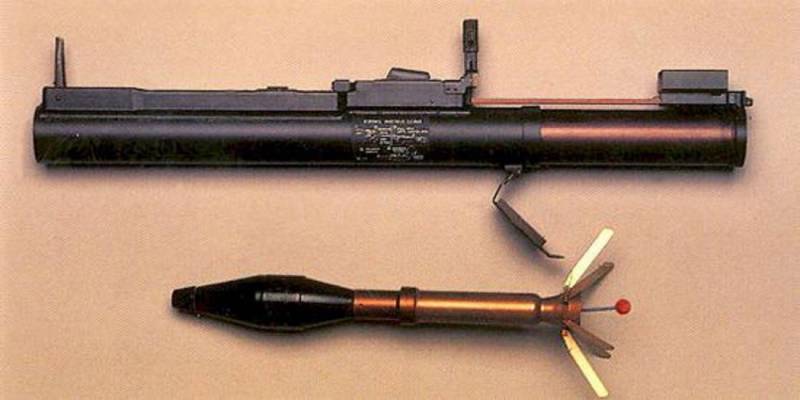
The mass of the grenade launcher is 3,5 kg, the length in the stowed position is 665 mm, and in the combat position it is 899 mm. The initial speed of the grenade is 180 m / s. The declared armor penetration is 300 mm. Sights are designed for a range of up to 300 m. However, the effective firing range on moving targets does not exceed 100 meters. Also inflated can be considered indicators of armor penetration. In the course of real hostilities, hits from a 66-mm grenade launcher repeatedly withstood the frontal armor of the hull and turret of Soviet T-55 and T-62 tanks. Nevertheless, the M72 LAW disposable grenade launcher, compared to hand and rifle cumulative grenades, was a big step forward and significantly increased the individual capabilities of infantrymen in the fight against enemy armored vehicles.
Tests of the Chinese Type 70 grenade launcher, created on the basis of the M72 LAW, began in 1970. The delivery of the first batch to the troops took place in 1974. Unlike the American prototype, the Chinese grenade launcher was not sliding. A disposable cartridge with a grenade launcher was attached to the front fiberglass barrel impregnated with an epoxy composite and reinforced with an aluminum alloy liner.

The Type 70 cumulative grenade looks very similar to the grenade used in the M72 LAW grenade launcher. But the Type 70 uses a piezoelectric fuse developed in China, and the Chinese grenade does not have a self-liquidating device.
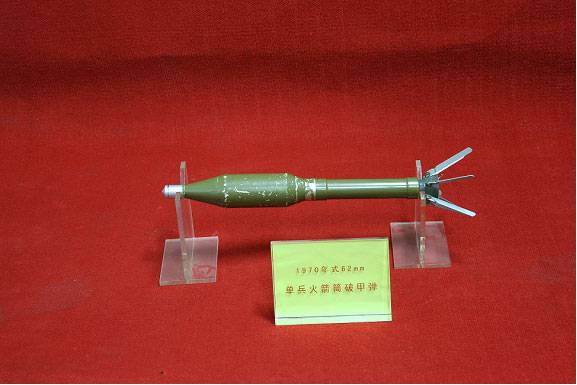
According to Chinese sources, a 62 mm Chinese-made cumulative grenade could normally penetrate 345 mm armor. However, Western experts believe that real armor penetration can be 30-40% less.
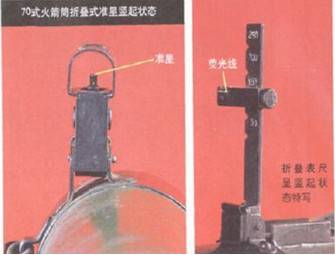
The grenade left the barrel at a speed of 130 m / s. Type 70 sights were calibrated over a distance of 50 to 250 m. The effective firing range at moving targets did not exceed 130 m.
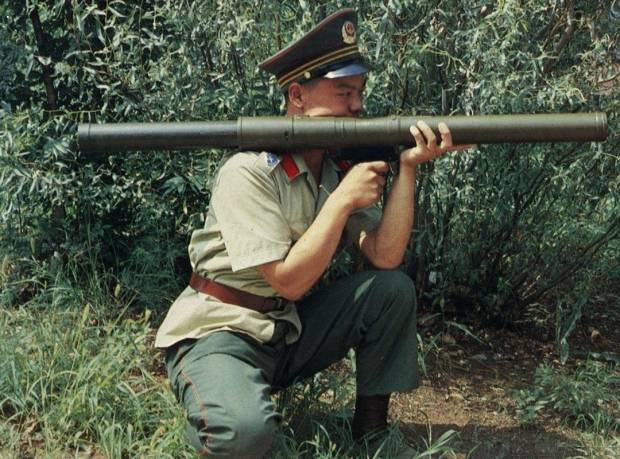
The mass of the grenade launcher in the firing position was 4,47 kg, the length in the firing position - 1200 mm, in the stowed position - 740 mm. Thus, the Chinese grenade launcher was heavier and longer than the American M72 LAW, but still remained light and compact enough to be used as an individual infantry anti-tank weapon.
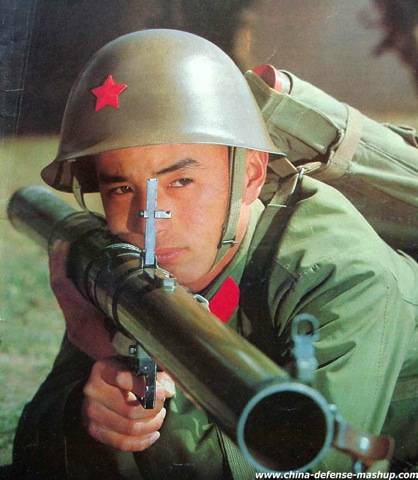
However, unlike the American M72 LAW grenade launcher, the later versions of which are still in service, the Chinese Type 70 was used in PLA very limitedly. During the operation, it turned out that during the shot there is a risk of a break in the coupling, which was fraught with serious injury to the shooter. The safety-starting mechanism of the grenade launcher worked unreliably, and the imperfection of the fuse of a cumulative grenade led to a large number of failures when meeting armor with a large angle of inclination. All this caused the Chinese military to abandon Type 70 grenade launchers after a short period of operation.
Easel anti-tank grenade launchers
Shortly before the cessation of military-technical cooperation between the countries, the Soviet Union transferred to China a license to manufacture the 82-mm B-10 recoilless gun, which has been in service with the Soviet Army since 1954. In the Soviet Army, the gun served as an anti-tank weapon of motorized rifle and airborne battalions.
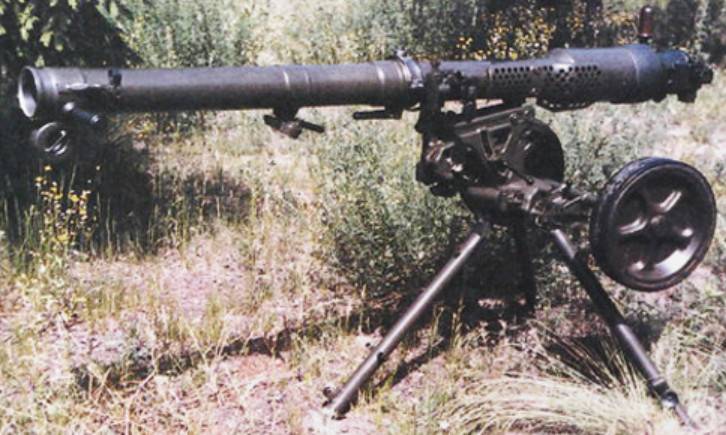
The B-10 recoilless gun had a smooth barrel with a length of 1910 mm and fired with feathered cumulative and fragmentation shells. A gun weighing 85 kg (with wheels) could fire at targets up to 4400 m, firing up to 6 shells per minute. Effective firing range on armored targets is up to 400 m, armor penetration is up to 200 mm. The ammunition of the gun included cumulative and fragmentation shots of shellless loading. The mass of the fragmentation and cumulative shells is 3,89 kg, the initial velocity is 320 m / s.
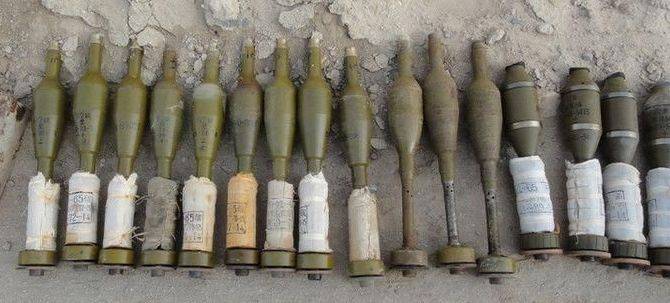
In terms of its characteristics, the 82-mm Soviet recoilless B-10 significantly exceeded the recoilless 57- and 75-mm guns available in the PLA, and was adopted by the PRC under the designation Type 65.
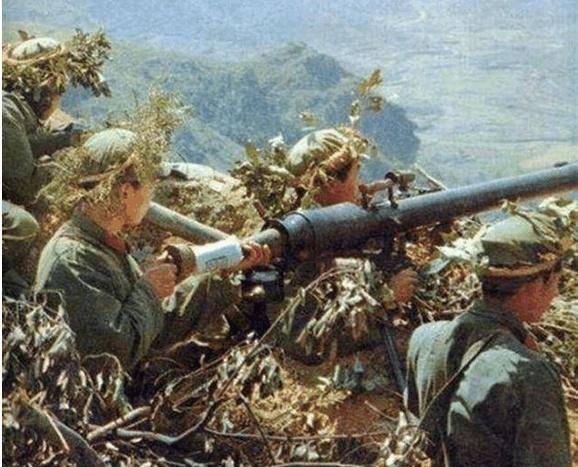
The production of Type 65 guns was established in the PRC in 1965 and continued until 1978. By the mid-82s, 1970-mm recoilless guns had supplanted the 75-mm Type 56 recoilless guns in parts of the first line. According to the states of the early 1980s, the anti-tank platoon of the PLA infantry battalion should have had 6 82-mm recoilless guns.
In 1978, the PLA entered service with an 82 mm Type 78 recoilless gun (referred to in some sources as PW78). The main difference between Type 78 from the previous sample was the weight reduced to 35 kg, which made it possible to shoot from the shoulder in case of urgent need.
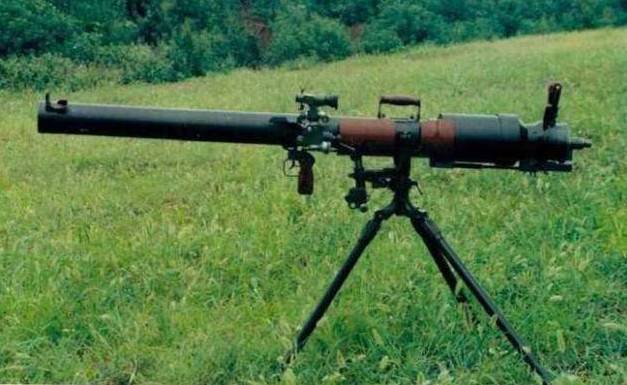
This was achieved through the use of a light tripod machine and by shortening the trunk to 1445 mm. In addition, changes were made to the shutter, which facilitated the work of the loader. On the Type 65 gun, the shutter opens down, on the Type 78 to the right.
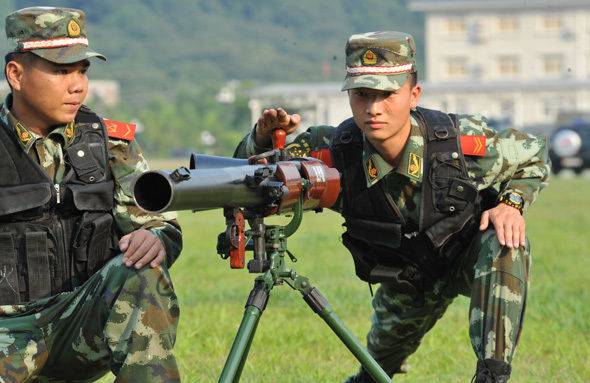
As the barrel became significantly shorter, to maintain an acceptable direct range, it was necessary to strengthen the propellant charge. At the same time, the initial speed of the cumulative grenade is 260 m / s, the effective range for firing at tanks is 300 m. The maximum range for firing a fragmentation grenade is 2000 m. The combat rate of fire is up to 7 rds / min.
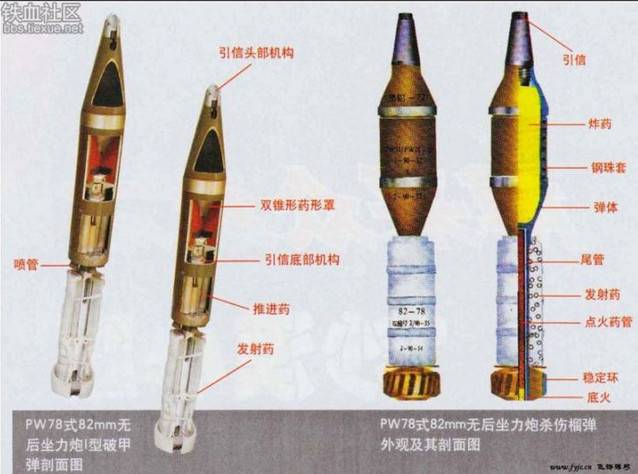
It is stated that the armor penetration of a cumulative 82 mm grenade of a new type is 400 mm normal. To combat manpower, shells equipped with 5 mm steel balls are designed with an effective damage zone of up to 15 m.
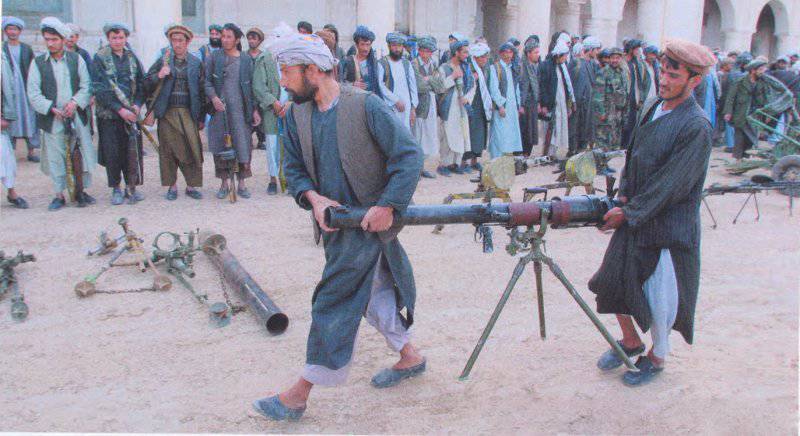
The recoilless 82-mm guns were used by the PLA during the armed conflict with Vietnam and on the Sino-Indian border, and were supplied to the armed forces of the Afghan opposition, African and Asian countries.
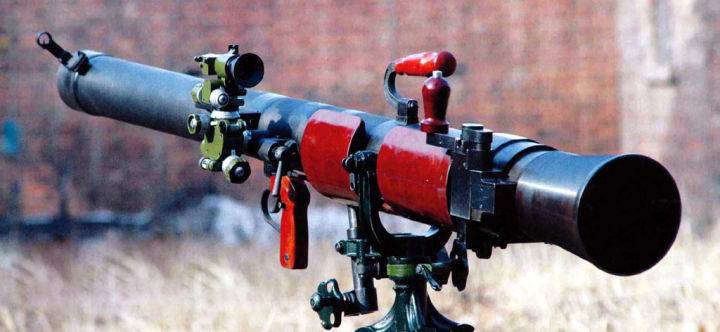
In the 1980s, the gun was modernized. Batch production of the improved Type 78-I and Type 78-II modifications continued until the mid-1990s. There was an opportunity to mount night sights, the bolt was improved, the ammunition included shots of increased power. 82 mm recoilless guns are still available in the PLA, but now these weapons are unable to effectively fight modern tanks and are mainly considered as a means of fire support for infantry.
To be continued ...
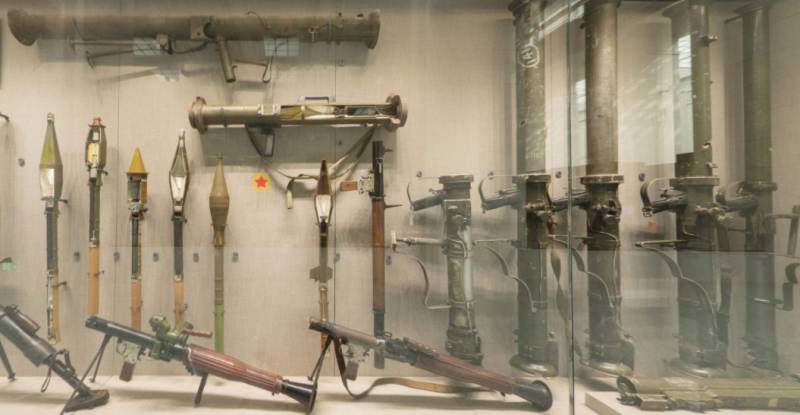
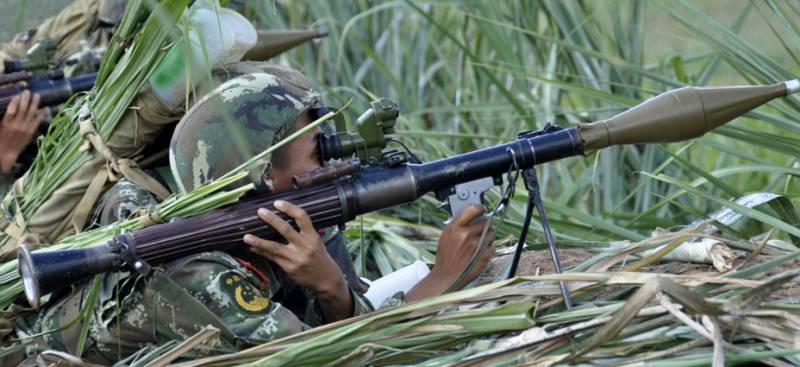
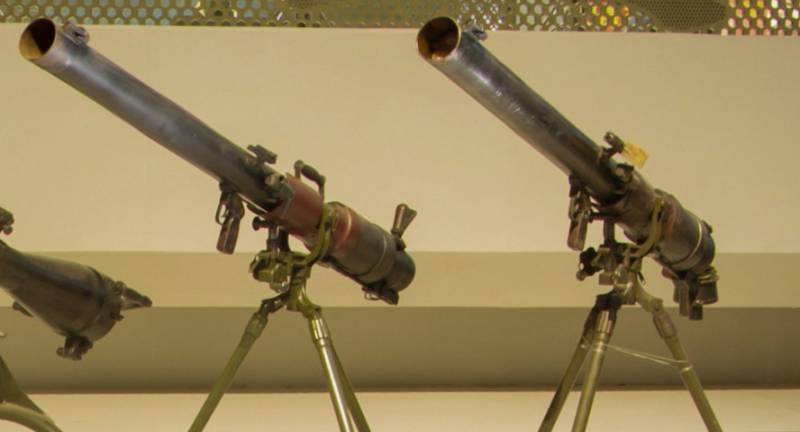
Information